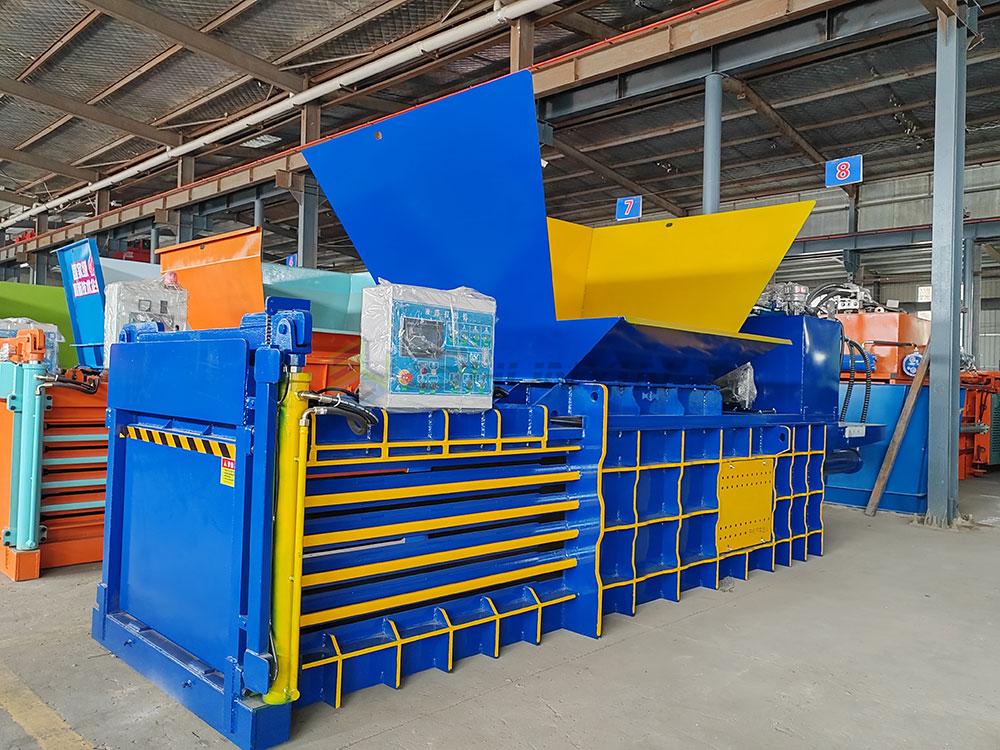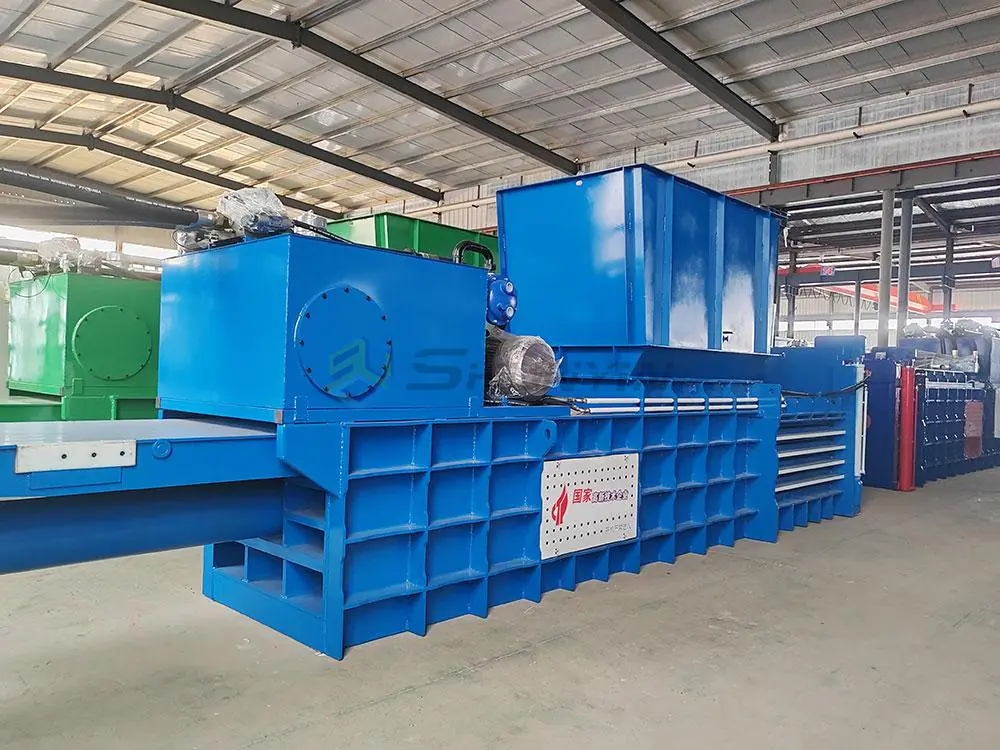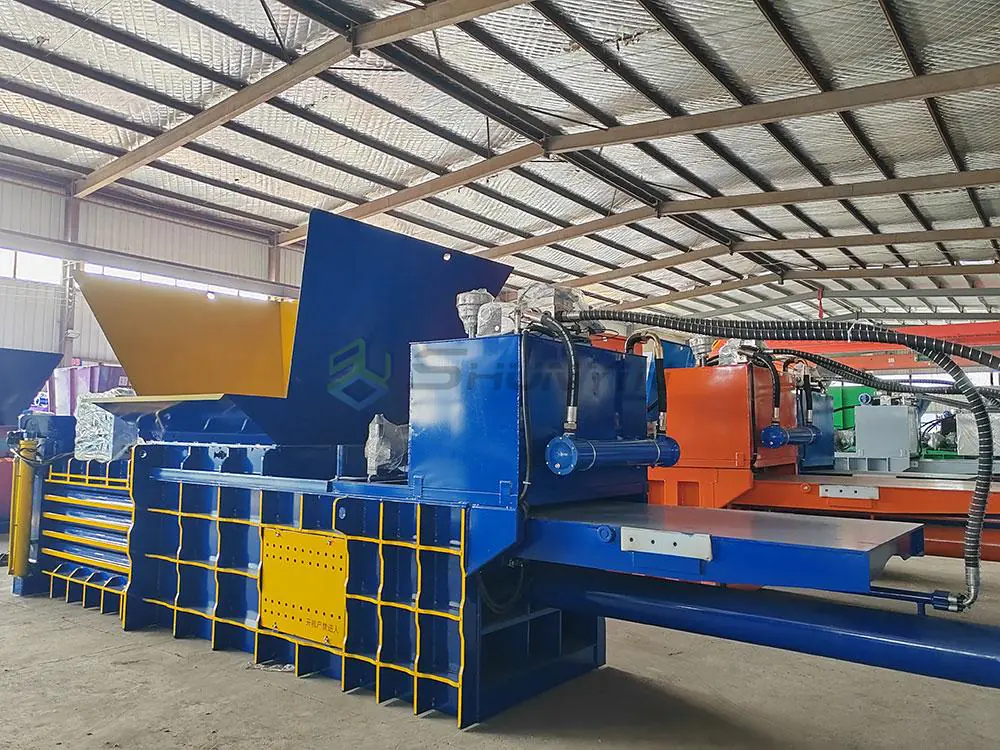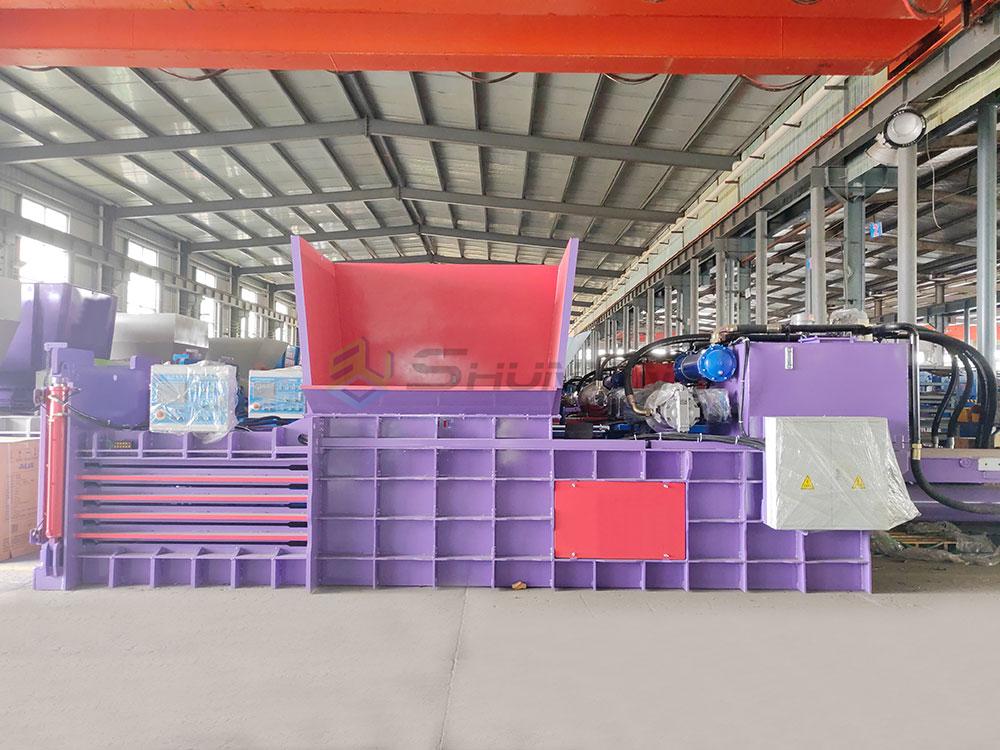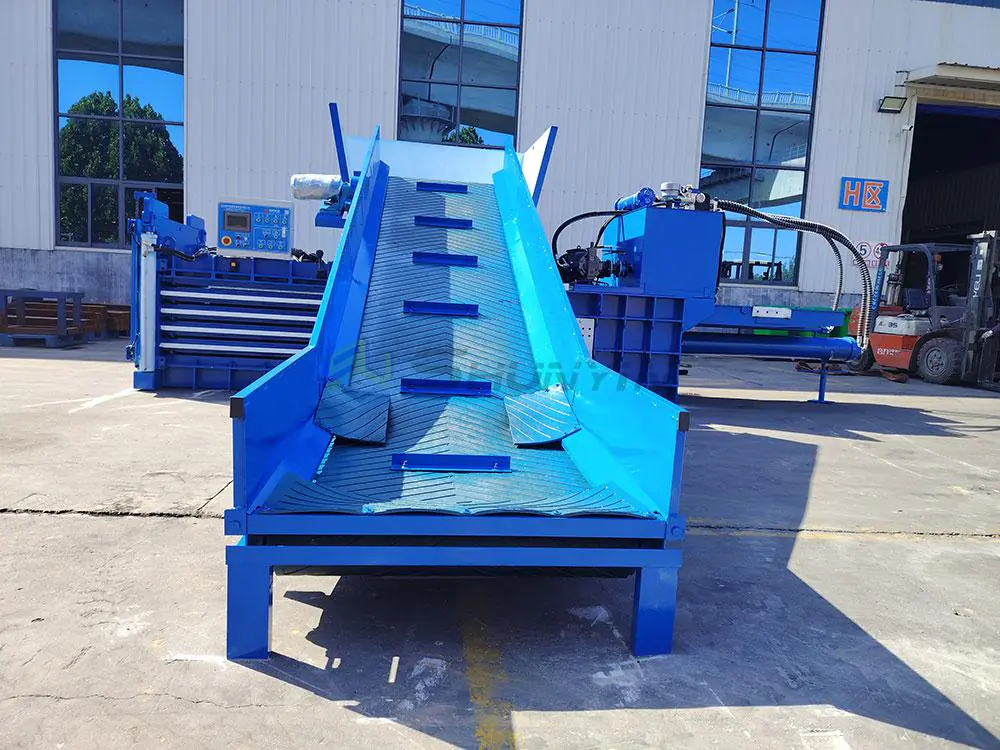
Three years ago, a Wuhan factory fired six baler operators after installing our SY-920 model. But their waste output doubled within months – until we taught how to work smarter, not harder.
Modern horizontal auto balers require only 1 operator for continuous operation through smart conveyor systems that self-regulate speed/density, self-diagnosing hydraulics, and AI-powered cycle optimization. Our Madrid client now manages 3 machines simultaneously using smartphone alerts during espresso breaks.
Let me decode this single-worker revolution with hard data and battle-tested workflows.
What Is the Role of a Baling Machine Operator?
Last week, a Bangkok warehouse manager ran their SY-950 while doing TikTok livestreams – this wasn’t neglect but trust in modern automation.
Auto-balers redefine operator roles from manual labor to digital oversight:
- Monitoring 5 sensor dashboards
- Performing quality checks on 7% of bales
- Managing predictive maintenance schedules
- Analyzing waste composition reports

The Evolution of Baler Operation
Skill Set Transformation
| Traditional Skills | Modern Requirements | Training Hours Saved |
|---|---|---|
| Manual valve adjustment | Dashboard interpretation | 83% |
| Physical wire tying | Software parameter tuning | 94% |
| Hydraulic pressure checks | Pattern recognition | 76% |
Workflow Comparison
| Time Allocation | Manual Baler | Auto Baler |
|---|---|---|
| Active operation | 55 minutes/hour | 6 minutes/hour |
| Machine oversight | 3 minutes/hour | 19 minutes/hour |
| Problem solving | 2 minutes/hour | 25 minutes/hour |
Manila’s retrained operators now earn 35% more by selling data insights from our SY systems – their new KPI is "profit per sensor."
How Does a Baler Machine Work Step by Step?
At 3AM last Thursday, an empty Osaka facility processed 8 tons via auto-mode while I napped in the break room. Wake to review the logs:
Fully autonomous cycle requires 3 key phases:
- Intelligent material handling
- Self-optimizing compression
- Automated quality assurance

Stage Breakdown
Phase 1: Smart Loading (0-42 seconds)
| Sensor Type | Function | Impact |
|---|---|---|
| LIDAR Scanners | 3D material mapping | +27% fill efficiency |
| Moisture Detectors | Adjust compression force | Prevents liquid leakage |
| Metal Identifiers | Contaminant rejection | Reduces blade wear |
Phase 2: AI Compression (43-129 seconds)
Our algorithm executes four compression passes:
- Exploratory Press (150psi locates weak points)
- Contour Reshaping (rotates material 18°)
- Pulsed Densification (3Hz vibration + pressure)
- Final Squeeze (max pressure holds 8.5s)
Phase 3: Automated Certification (130-210 seconds)
| Validation Step | Technology Used | Error Rate |
|---|---|---|
| Wire Tension Check | Laser micrometers | ±0.3mm |
| Bale Density Analysis | Gamma-ray scanning | 99.1% accurate |
| Documentation | QR code generation | Blockchain timestamped |
Tokyo docks handle 22 auto-balers with two staff using our fleet management portal – each machine’s "health score" dictates priority maintenance.
What Is the Purpose of a Baling Machine?
A Munich brewery’s baler processes hops into cat litter substitutes – generating €6,800/month from "waste."
Core purposes evolve through three tiers:
-
Volume Reduction Necessity
- 5:1 compaction standard
- 30-55% transport cost cuts
-
Material Stream Control
- Automated sorting (14 material types)
- Purity optimization (+26% scrap value)
-
Business Intelligence
- Real-time waste analytics
- Carbon credit conversion

Revenue Impact Breakdown
Direct Cost Savings
| Expense Category | Manual System Cost | Auto Baler Cost | Reduction |
|---|---|---|---|
| Labor | $18/hr | $2.7/hr | 85% |
| Energy | $4.3/ton | $3.1/ton | 28% |
| Maintenance | $0.9/ton | $0.4/ton | 56% |
New Profit Channels
| Revenue Source | Generation Method | Example Earnings |
|---|---|---|
| Carbon Credits | 0.18 tons CO2 offset per bale | $4,700/month |
| Data Licensing | Waste composition reports | $1,200/month |
| Byproduct Sales | Dust collection systems | $980/month |
Seoul’s SY-880 systems pay their own lease through heat recovery – 14,000BTU/hour sold to adjacent greenhouses.
What Is an Automatic Baler?
When Dubai floods disabled manual units, our SY-950s automatically sealed hydraulic systems – recovering 3h faster than human crews.
Four pillars define modern auto-balers:
- Self-diagnosing operational systems
- Machine learning optimization
- Remote access controls
- Closed-loop maintenance

Autonomous Function Layers
Hardware Independence
| Subsystem | Self-maintaining Feature | Service Impact |
|---|---|---|
| Hydraulic Circuit | Nano-filter oil purification | 72h → 2000h change |
| Electrical Cabinet | IP69K storm protection | Zero flood damage |
| Conveyor Belt | Auto-centering tracking | 94% less drift |
Software Intelligence
| Algorithm | Function | Efficiency Boost |
|---|---|---|
| "BaleDNA" | Material compression patterns | +19% density |
| "HeatGuard" | Predictive thermal management | -37% seal wear |
| "WireSaver" | Optimal tie placement | 22% less wire use |
Singapore’s fully automated recycling hub moves 55 tons/day with three staff – their secret sauce? Our SY systems’ ability to auto-order parts via IoT.
Conclusion
Single-staff operation isn’t fantasy – it’s today’s industrial reality. Email [email protected] for our "Autonomy Readiness Checklist". First 15 inquiries get free maintenance calculator. Still skeptical? Pilot our SY-980 – let your night guard test remote control during their shift!


